Tuḥfat al-ʻIrāqayn : manuscript, 1604

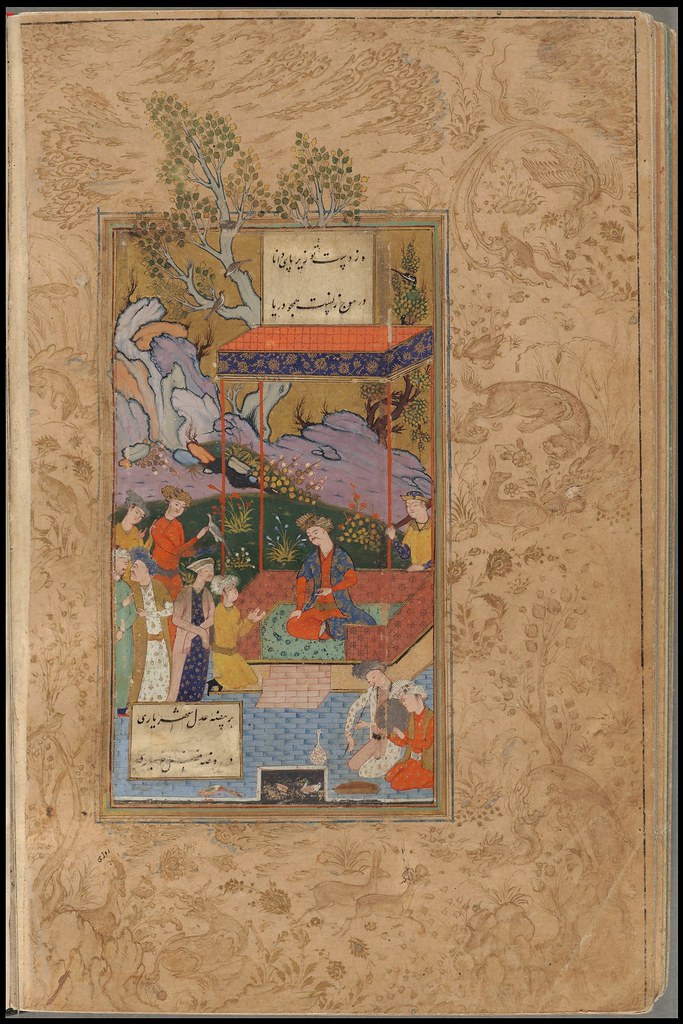
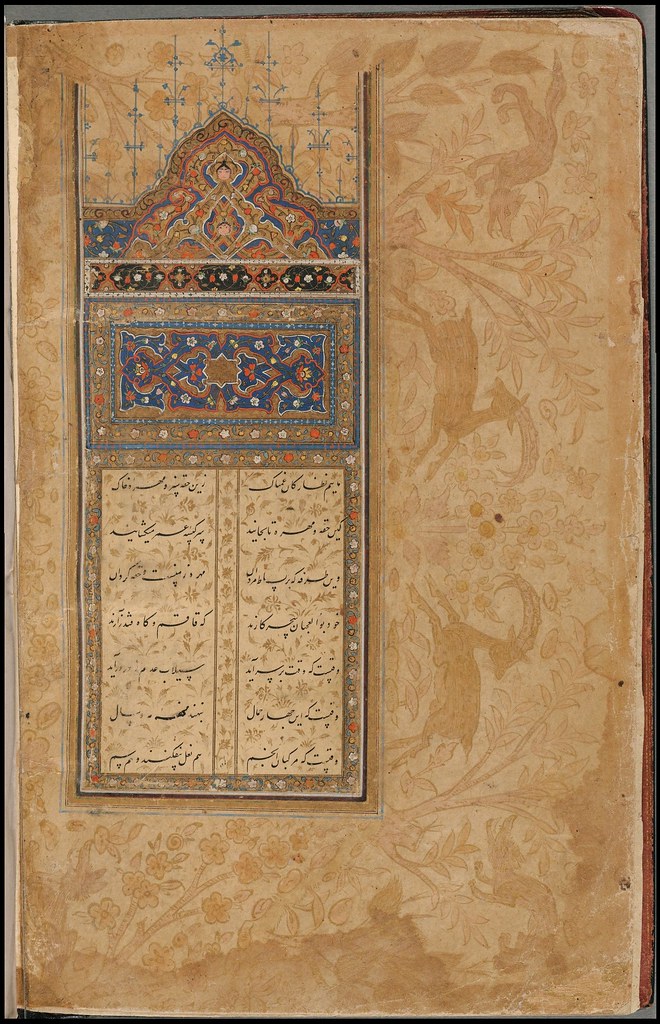
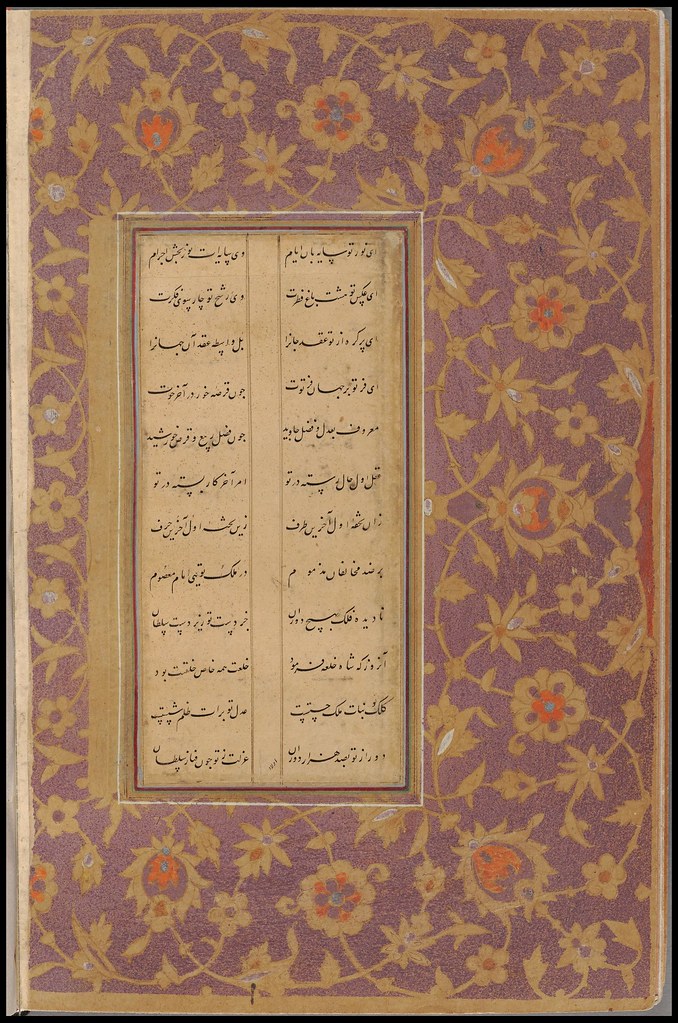
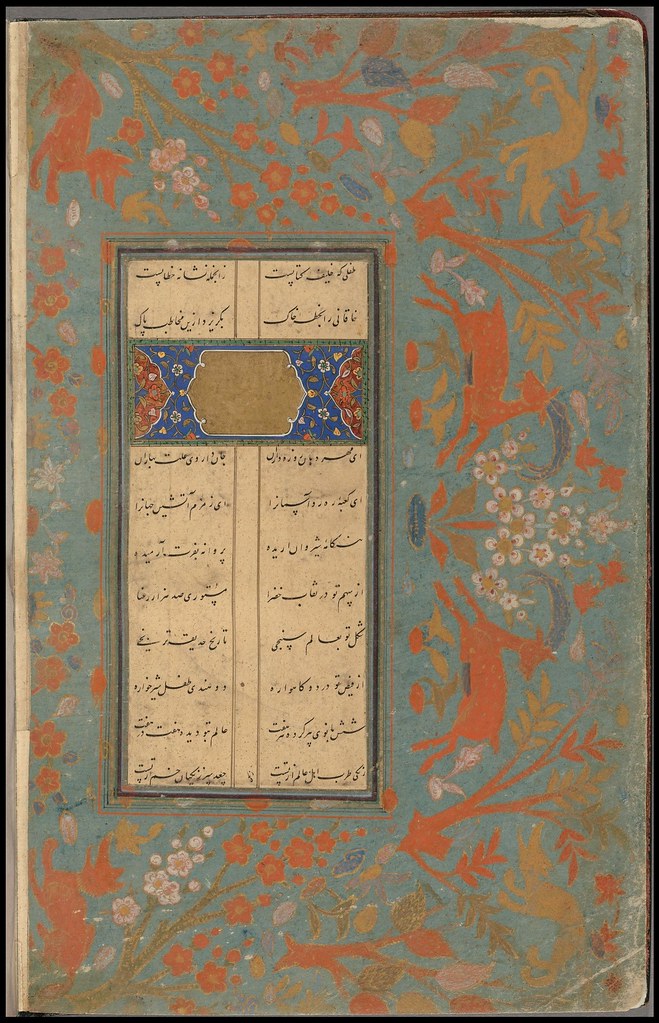
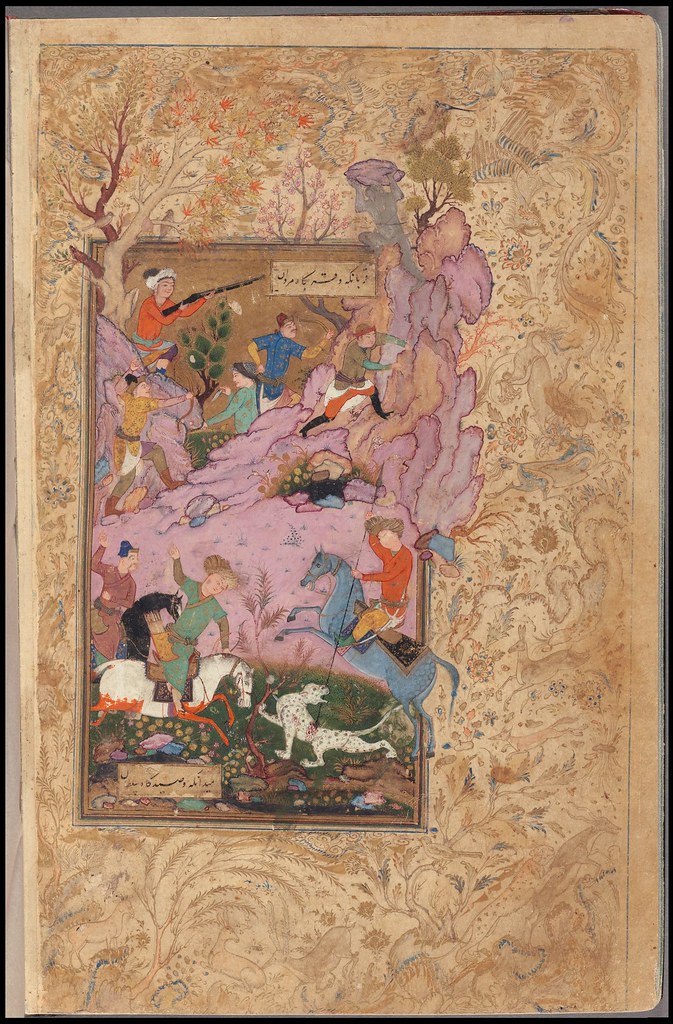
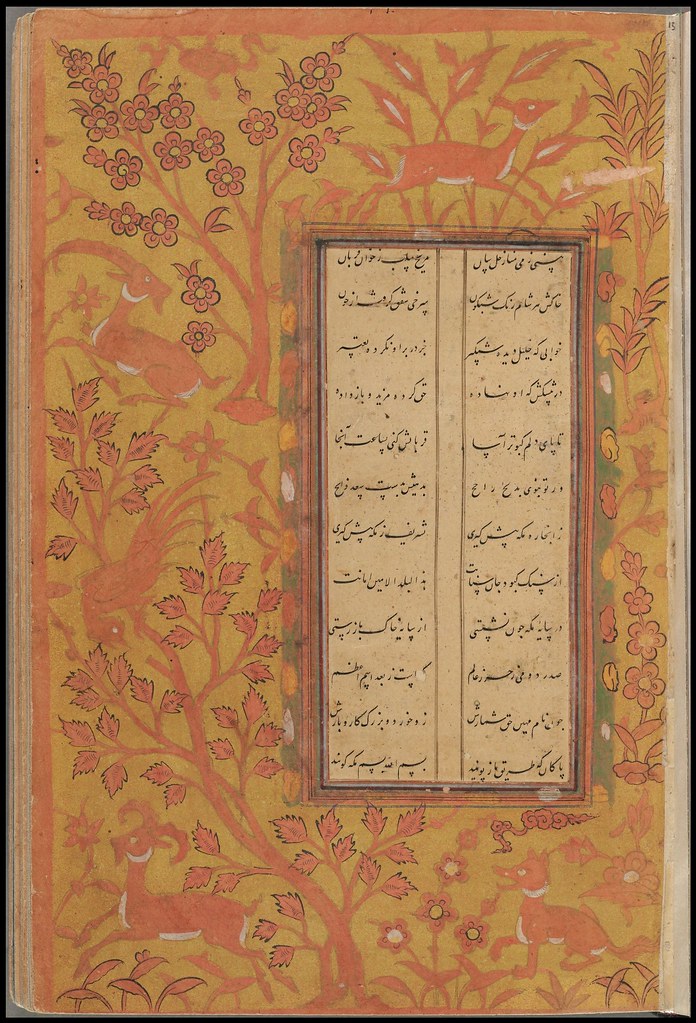
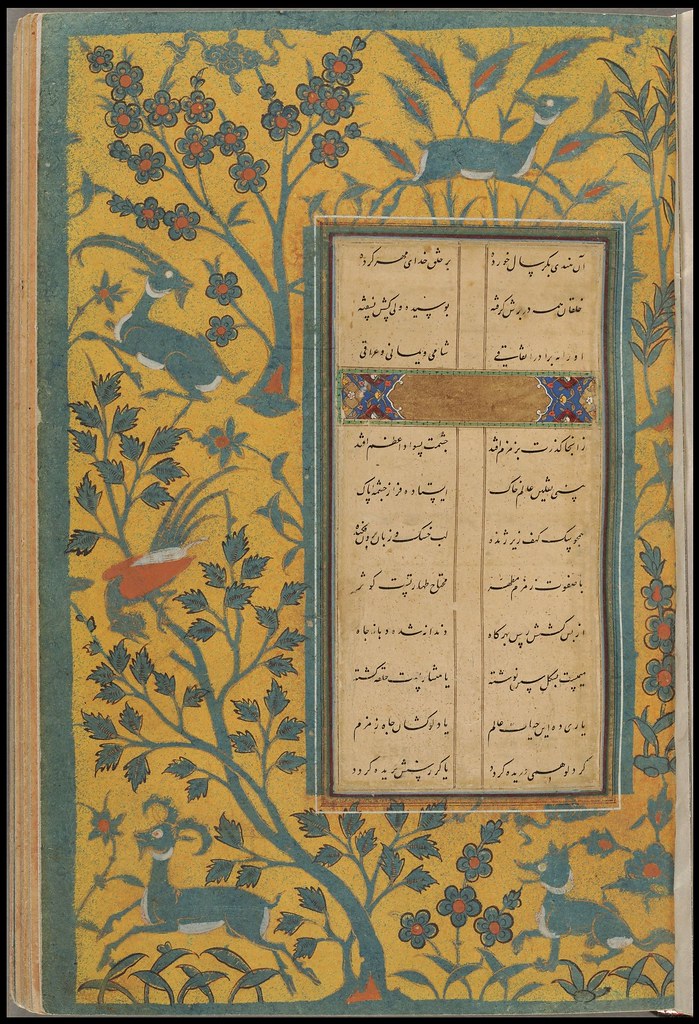
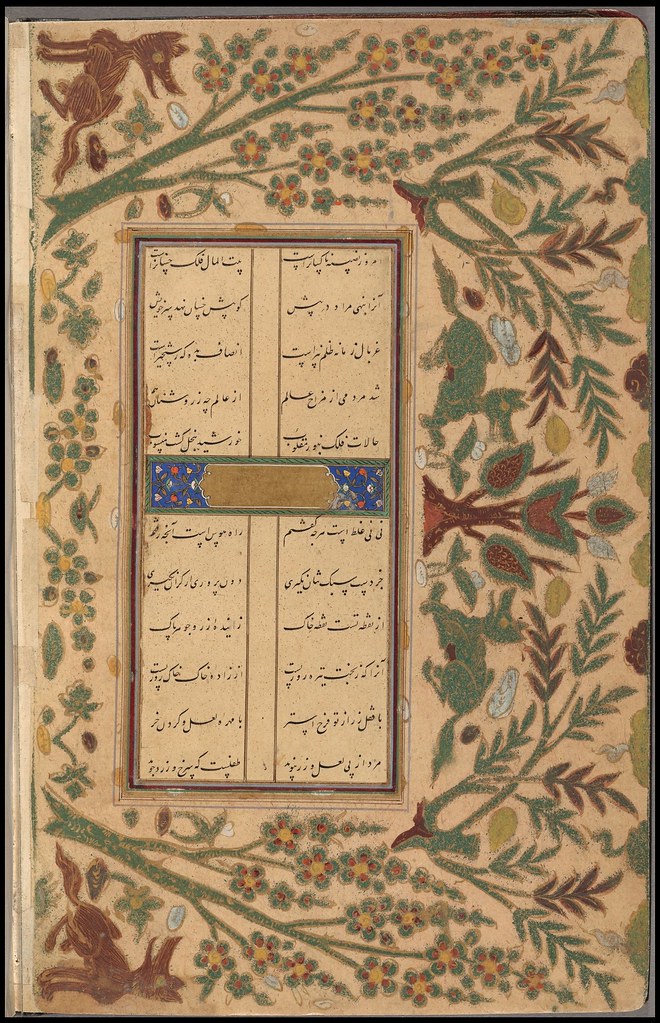
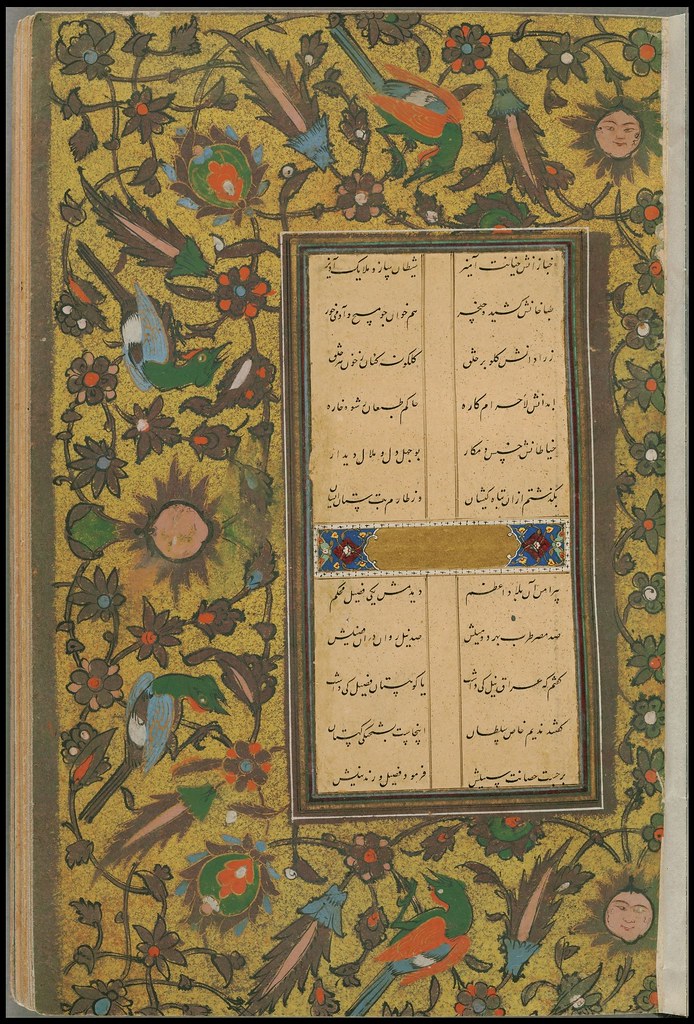
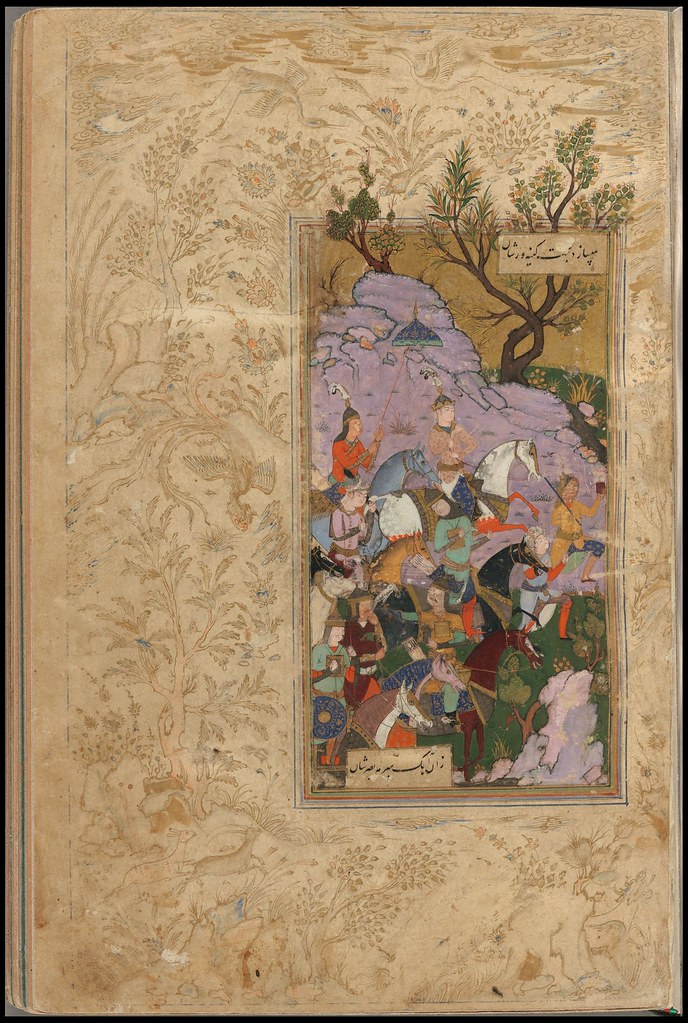
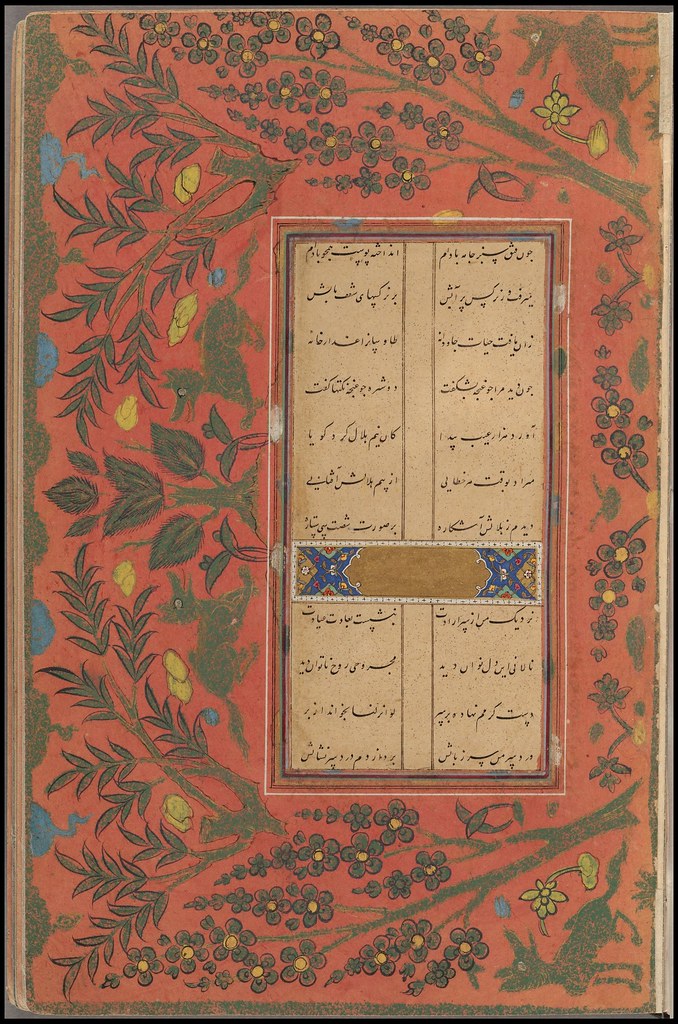
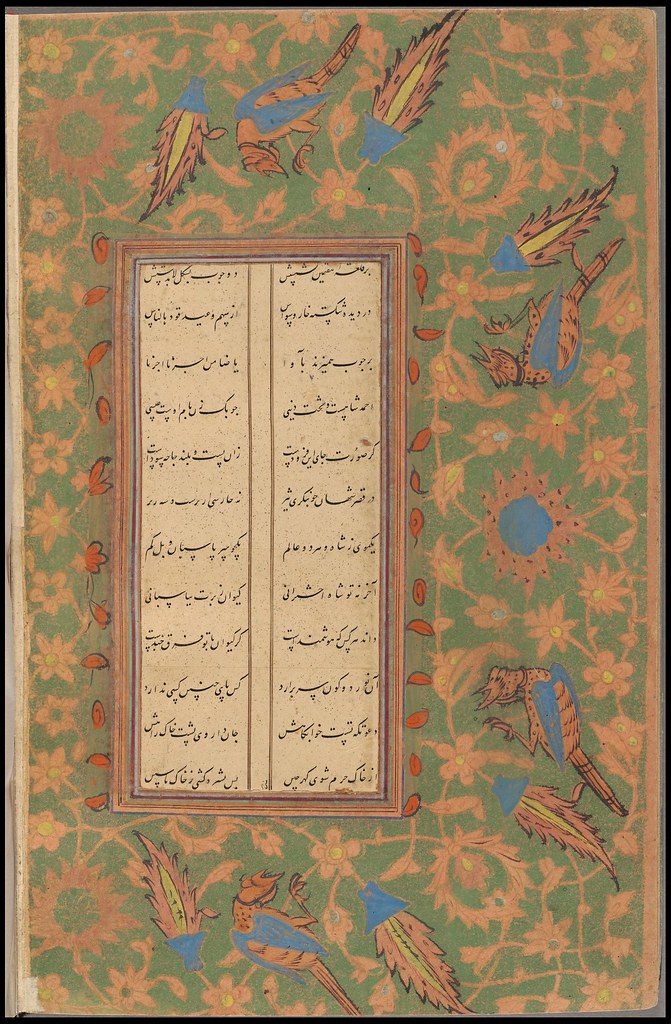
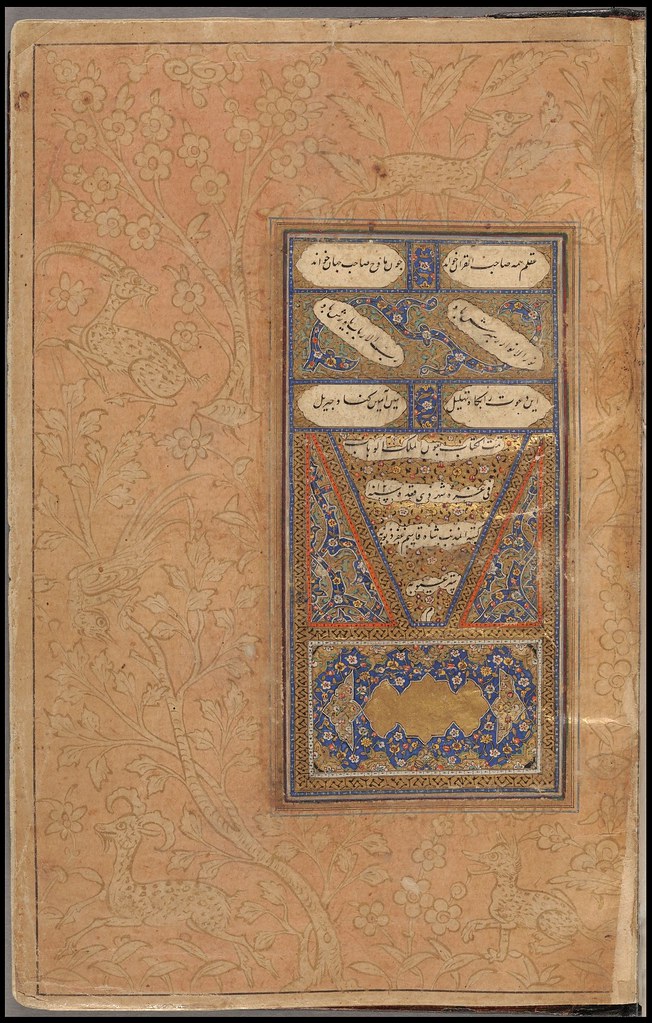
{the images were spliced together from screencaps and it's worth clicking through to look at the higher resolution versions; the notes below are essentially paraphrased from the bibliographic record}
This manuscript of Persian poems was written in a small professional nastaliq* script in black ink in two columns laid into the pages. The text is framed within multiple coloured lines (red, green, gold, black and blue).
The page-borders are patterns of birds and animals in colours (pink, orange, blue, etc...) outlined in gold. There are numerous aniconic* headpieces in colours and gold, and three miniatures from the Isfahan school. All of the pages are decorated.
The manuscript was produced in 1604 by Shāh Qāsim and is a copy of the original collection of poetry by Khāqānī, Afz̤al al-Dīn Shirvānī from the end of the 12th century. The poems are classified bibliographically as travel anecdotes.
Tuḥfat al-ʻIrāqayn (MS Typ 536) was digitised by Houghton Library at Harvard University.
I came across the work while looking through the manuscripts in Harvard's Islamic Heritage Project.
Previously: arabic; illuminated.
No comments:
Post a Comment